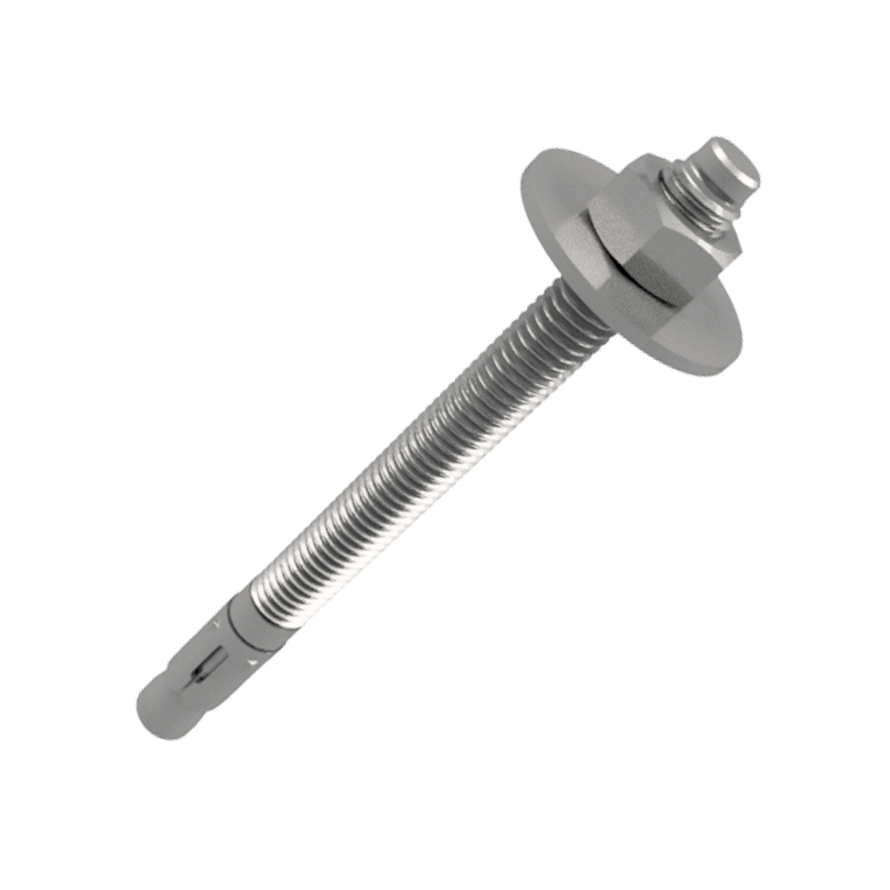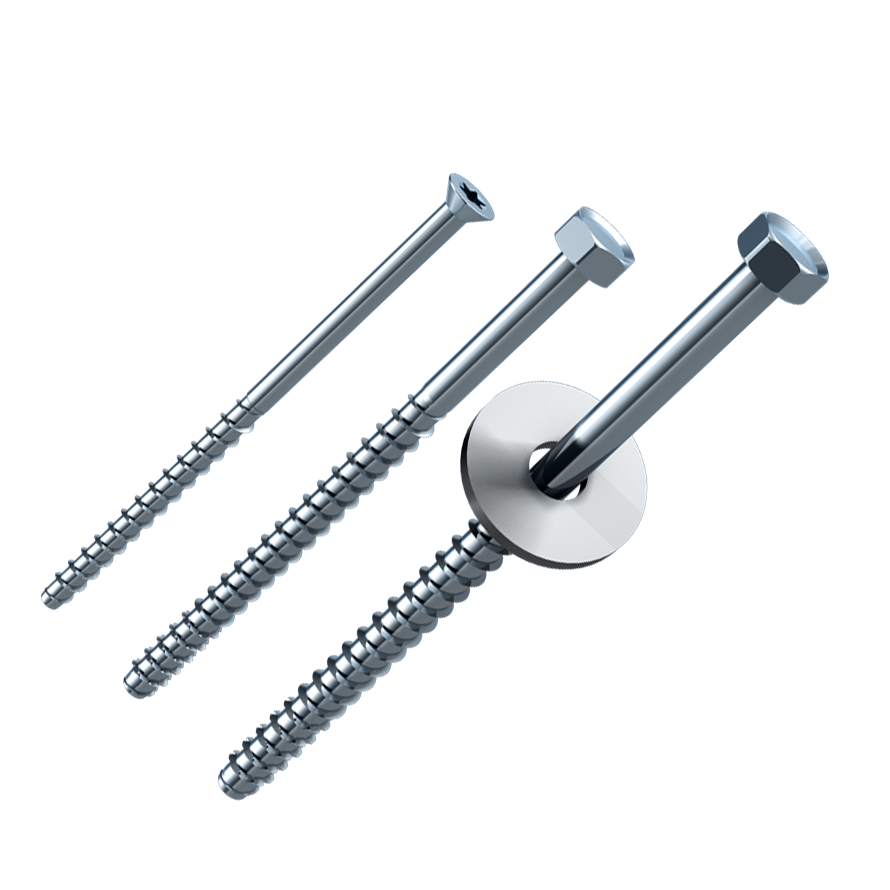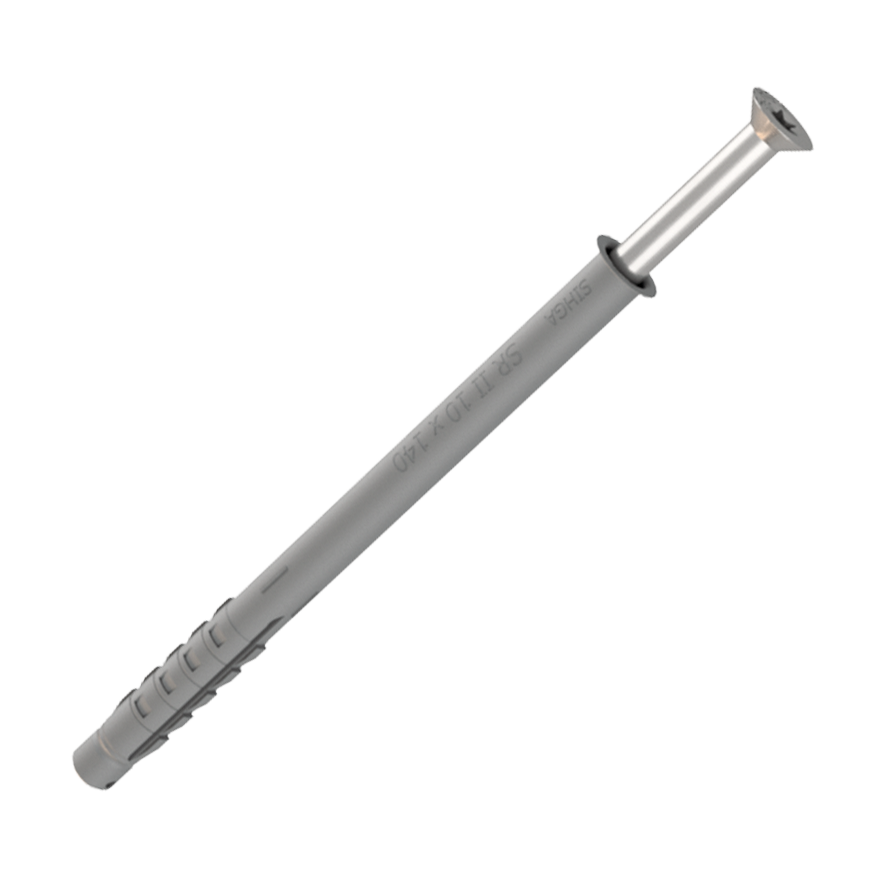3
Produkte

Betsi®
Expansion Anchor. Fastenings for wall beams, sills, steel brackets, support feet, etc. on non-cracked concrete from concrete quality C 20/25.
Concrete anchor: areas of application & what to look out for
With a concrete anchor from SIHGA®, heavy constructions such as beams, piles and posts can be anchored in concrete in timber construction. Especially in facade construction, terrace construction and exterior garden design - for example for anchoring the connecting posts of walls, fence posts, supporting beams of a carport, pergolas, supporting pillars of swings, etc.
SIHGA® tip: Concrete anchors are available in different shapes, lengths and thicknesses. Adapt these to the intended use to ensure the necessary stability.
Factors that influence the stability of the construction:
- The length influences how deep the concrete anchor penetrates the concrete - the deeper, the more stable
- The thickness of the concrete anchor also influences the stability - the thicker the diameter, the more resilient the anchor
Betsi® expansion anchor for fixing heavy loads
The Betsi® expansion anchor from SIHGA® is a high-quality fixing tool for wall beams, sleepers, steel brackets, column bases etc. on non-cracked concrete from concrete grade C 20/25. The heavy-duty anchor is specially designed for very high tensile and shear loads and is therefore versatile for a range of applications. Extra-long lengths of up to 400 mm even enable the fixing of large timber cross-sections. You benefit from a durable and highly resilient connection that saves time and money. Despite foolproof handling by simply hammering in and tightening, the full load-bearing capacity is achieved.
The accessories supplied, including the installation instructions, ensure rapid installation and the Stabebo SDS drill included with four-edged geometry especially for reinforced concrete guarantees that you select the correct drill diameter and the appropriate drill bit quality.
SIHGA® tip: You can easily read off the load table including edge distances. This provides certainty for the right anchor selection.
BeziFix® concrete anchor: Secure connection of wood and concrete
The BeziFix® anchor from SIHGA® enables the secure fixing of wood in concrete without dowels. The simple push-through assembly also saves time. The concrete anchor is available in different variants - for mounting wooden sleepers and beams as well as for fixing post beams on concrete.
The special feature of the BeziFix® anchor: It can be subjected to direct loads and is approved for concrete grades C 20/25 to C 50/60 - in both cracked and non-cracked concrete. This makes it very versatile in use. This concrete anchor is therefore a very precise and time-saving solution.
The concrete anchor is a particularly stable and reliable anchoring solution that has been specially developed for the secure fixing of metal and wooden structures in concrete. The frictional connection in the concrete ensures a high load-bearing capacity and safety. The anchor is particularly suitable for medium to heavy loads and enables quick and easy installation.
Dowels are typically used for light loads in soft materials such as wood, while anchors are used for heavier loads and harder materials such as concrete. So when it comes to fixing larger loads, the tools suitable for this are no longer called dowels, but rather anchors.
Concrete screws are a quick and easy method of fixing in concrete. After pre-drilling and blowing out the drill hole, the screws can be screwed in directly and withstand heavy loads. No additional dowels are required.
Concrete screws have a load-bearing capacity four to five times higher than that of conventional anchors. The hold of the screws depends on the one hand on the length or the depth of penetration into the concrete, with a deeper seat providing more stability. On the other hand, the larger the diameter of the anchor, the higher its load capacity.


